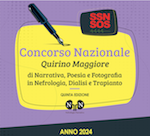Truths and Legends on Arteriovenous Fistula
DOI:
https://doi.org/10.33393/gcnd.2013.1016Keywords:
Arteriovenous fistula, Cardiovascular disease, Cardiovascular mortality, Congestive heart failure, Hemodialysis, High-output heart failureAbstract
Large studies show a graded mortality risk from both cardiovascular (CV) and infectious diseases depending on access type, with the highest risk associated with catheters, followed by grafts, and then arteriovenous fistulas (AVF). The presence of an AVF has an adverse effect on cardiac function, but its exact contribution to CV morbidity is not clear. It has long been known that a vascular access (VA) with an inappropriately high-flow rate may be the cause of high-output heart failure. Even more paradoxically, there may be cardio-pulmonary benefits conferred by AVF. Thus, while emphasizing the real benefits of creating a native AVF, we would also like to stress the danger of attaining excessive blood flow rates. The key word in the case of VA choice is “eligibility”. A “patient first, not fistula first, but avoid a catheter if at all possible” approach might be the best.Downloads
Download data is not yet available.
Downloads
Published
2013-10-05
How to Cite
Basile, C., & Lomonte, C. (2013). Truths and Legends on Arteriovenous Fistula. Giornale Di Clinica Nefrologica E Dialisi, 25(2), 94–99. https://doi.org/10.33393/gcnd.2013.1016
Issue
Section
Reviews
License
Authors contributing to Giornale di Clinica Nefrologica e Dialisi (GCND) agree to publish their articles under the CC-BY-NC 4.0 license, which allows third parties to re-use the work without permission as long as the work is properly referenced and the use is non-commercial.











